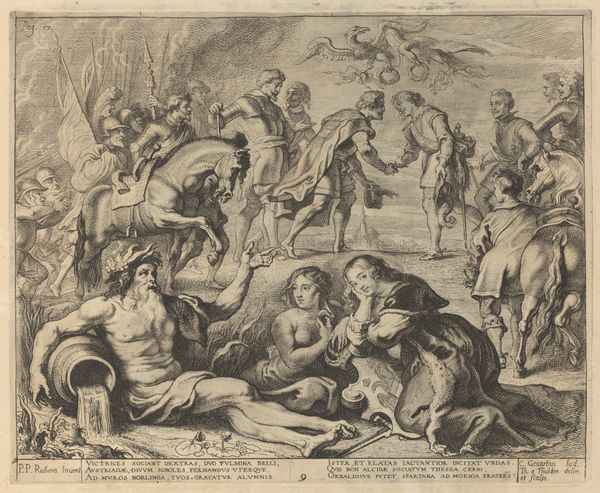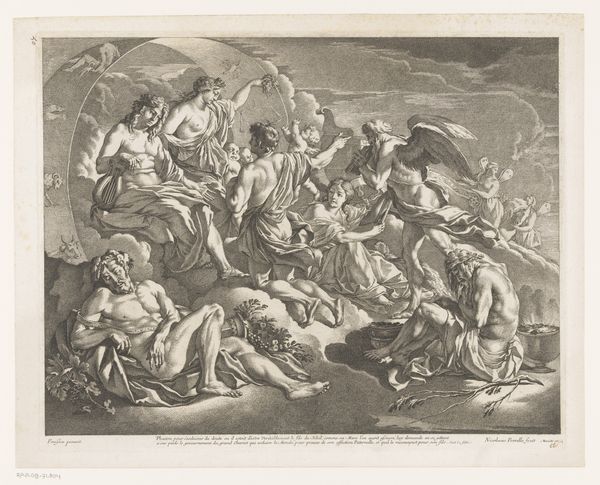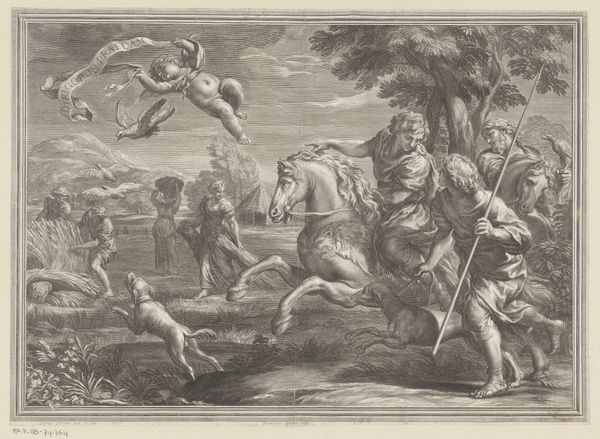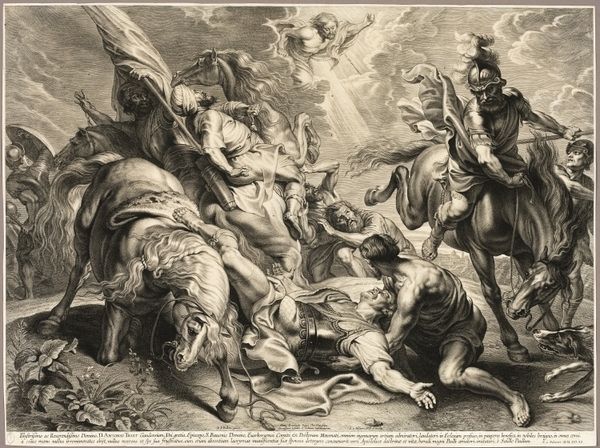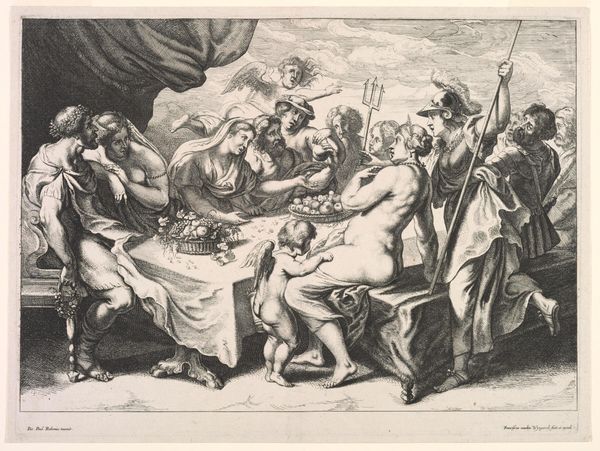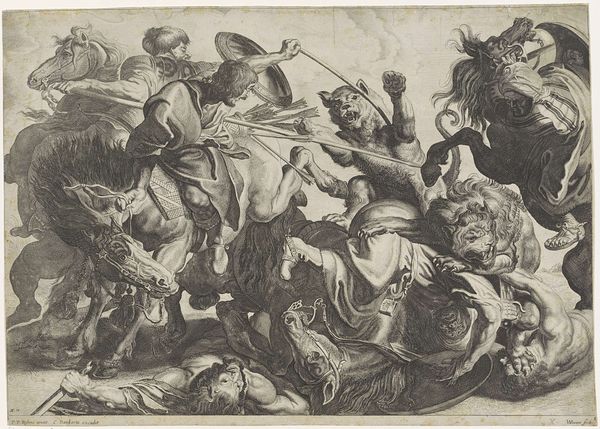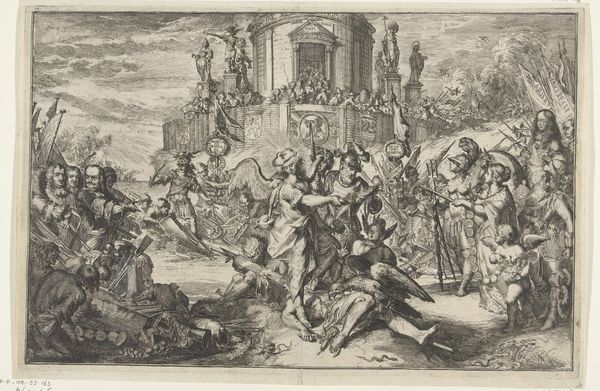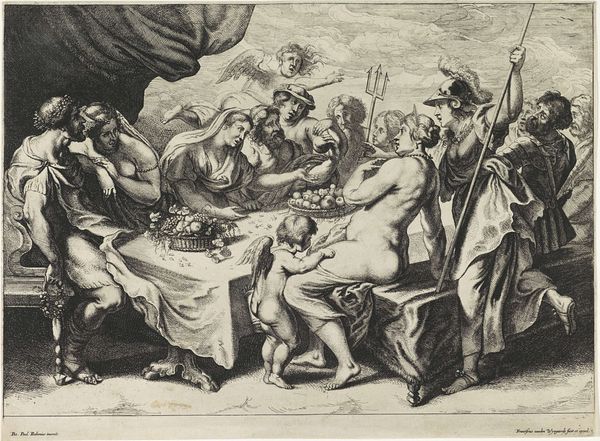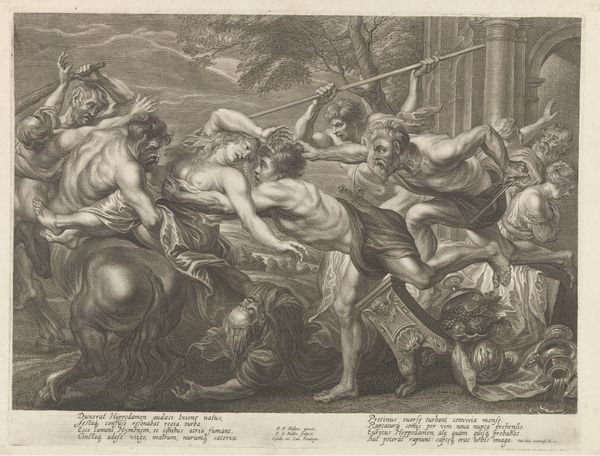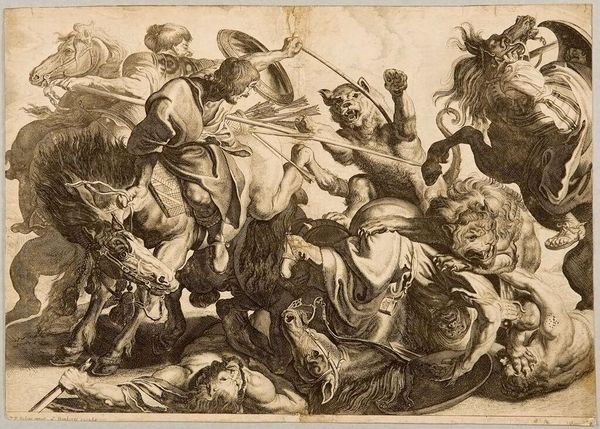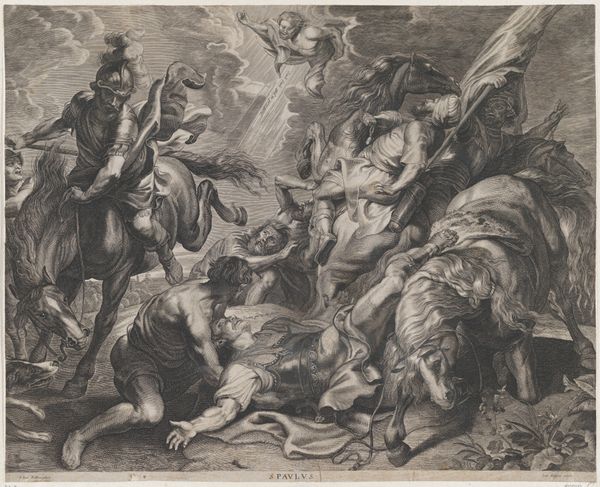
drawing, print, paper, engraving
#
drawing
#
baroque
# print
#
paper
#
genre-painting
#
engraving
Dimensions: 409 × 586 mm (image); 425 × 590 mm (primary support, trimmed within platemark); 496 × 680 mm (secondary support)
Copyright: Public Domain
Curator: Oh, what a chaotic dance of life and death! Just glancing at it, I'm bombarded with a sense of frenzied energy. The flurry of bodies and roaring animals almost feels like it's leaping off the page. Editor: Indeed. We're looking at "The Lion Hunt," an engraving created sometime between 1621 and 1629 by Schelte Adamsz. Bolswert. The scene depicts a dramatic confrontation between humans and lions. You really get the action through the artist’s expert handling of line. Curator: Bolswert... that's a new name to me, I wonder about the mindset of an artist so drawn to such brutal, visceral moments. It gives me a feeling of humanity grappling with the untamed forces of nature and its own internal ferocity. Do you think it reflects anxieties of that time? Editor: Absolutely, the work encapsulates Baroque dynamism. Observe the pronounced diagonals, the figures caught mid-motion, and the deep contrasts in tone that create a sense of drama and immediacy. Semiotically, the lion could represent primal instincts, and its domination underscores not just conquest, but also human strength prevailing against adversaries. The print medium itself—engraving—allowed Bolswert to achieve that degree of tonal complexity through careful scoring of the metal plate, pulling dramatic scenes from that labor. Curator: So interesting that you noticed it as engraving! To me, it looks like just an early take on an action film, frozen in ink and paper! Makes you wonder if we have changed much since. Do you see a hero in the visual maelstrom, a figure we’re supposed to root for, or does the artist purposefully muddy those waters? Editor: I believe the ambiguity is quite deliberate. By refusing a singular hero, Bolswert captures the struggle for supremacy and existence, revealing raw instinct uncolored by sentiment. Also, don't miss the texture created through crosshatching that provides depth and shadow to amplify the scene’s brutality. The entire event looks less of a noble sport, and more of a gory brawl. Curator: What an apt way to summarize it. Next time I see an action film, I'll think of Bolswert lurking behind the camera. What do you take away as your lingering impression? Editor: It makes me appreciate how art distills the energy of survival and also of our capability of portraying it, in an intriguing visual archive.
Comments
No comments
Be the first to comment and join the conversation on the ultimate creative platform.
